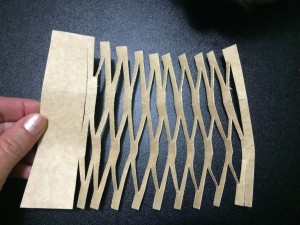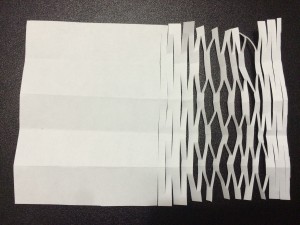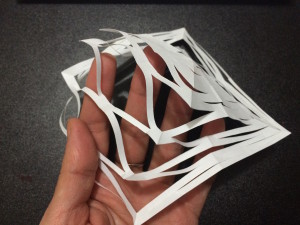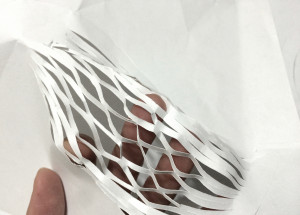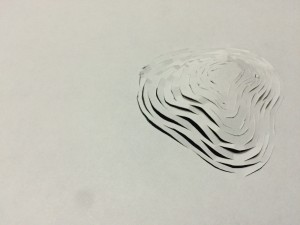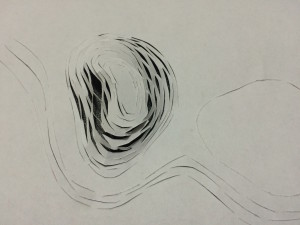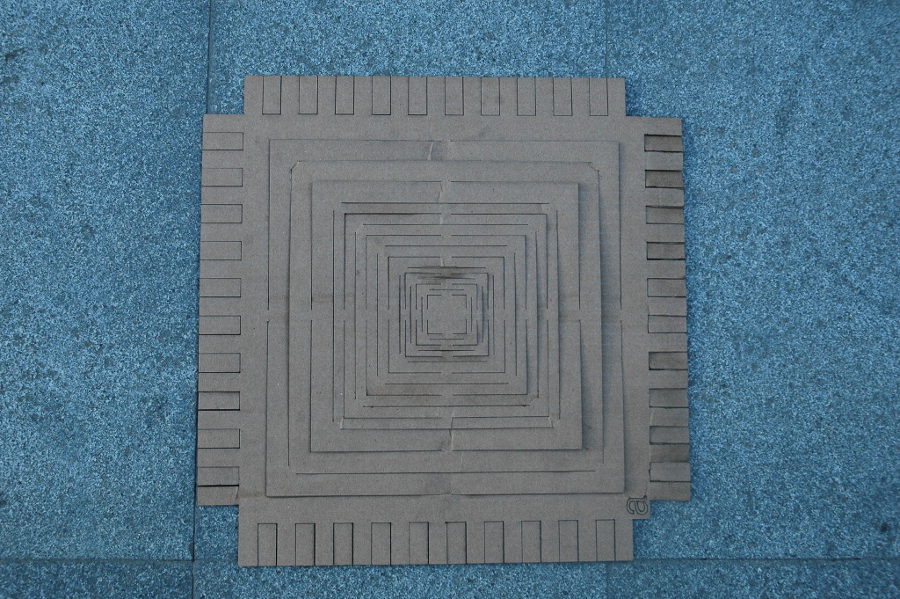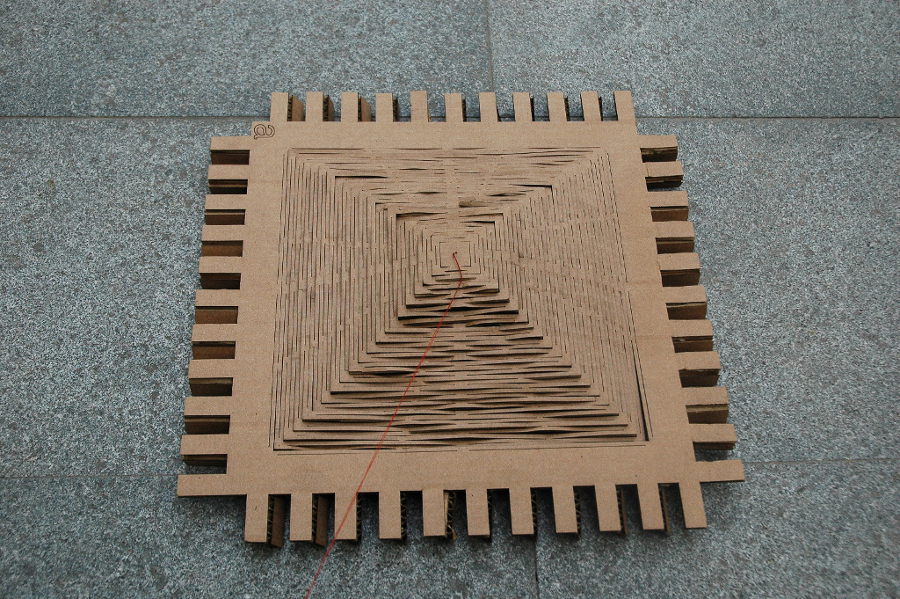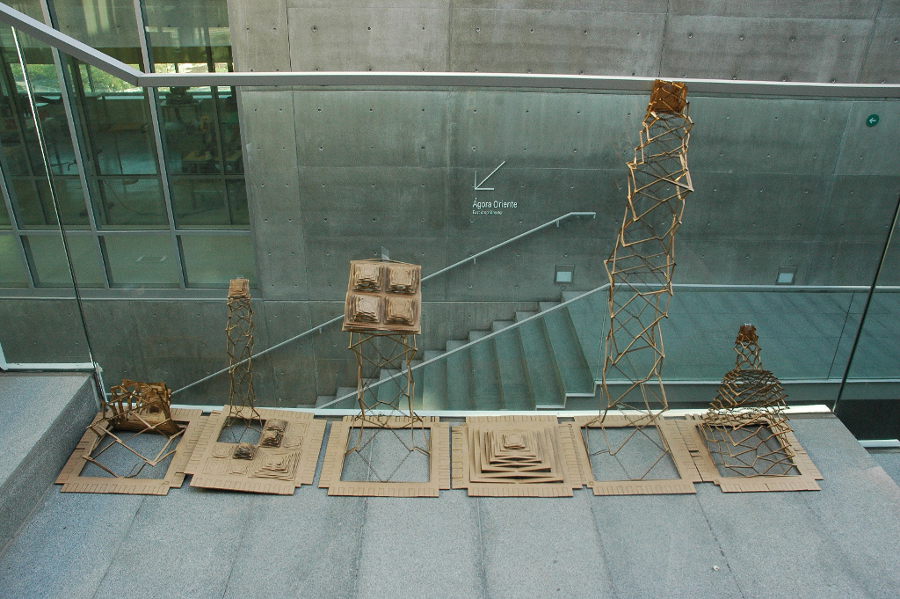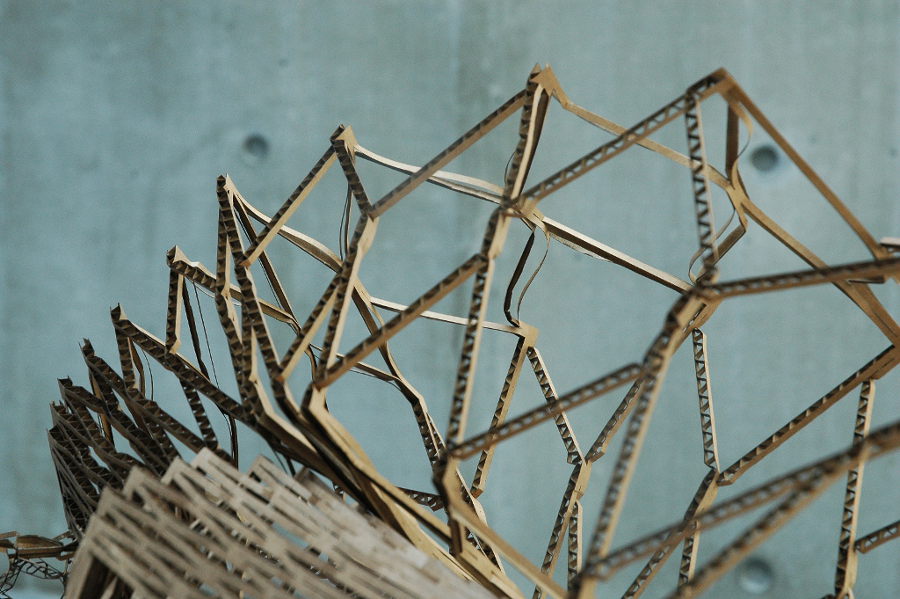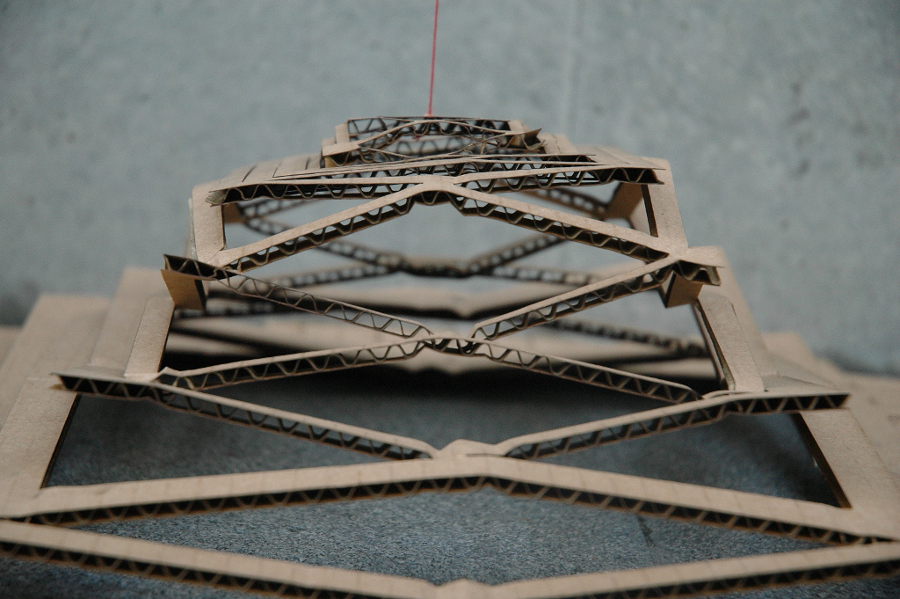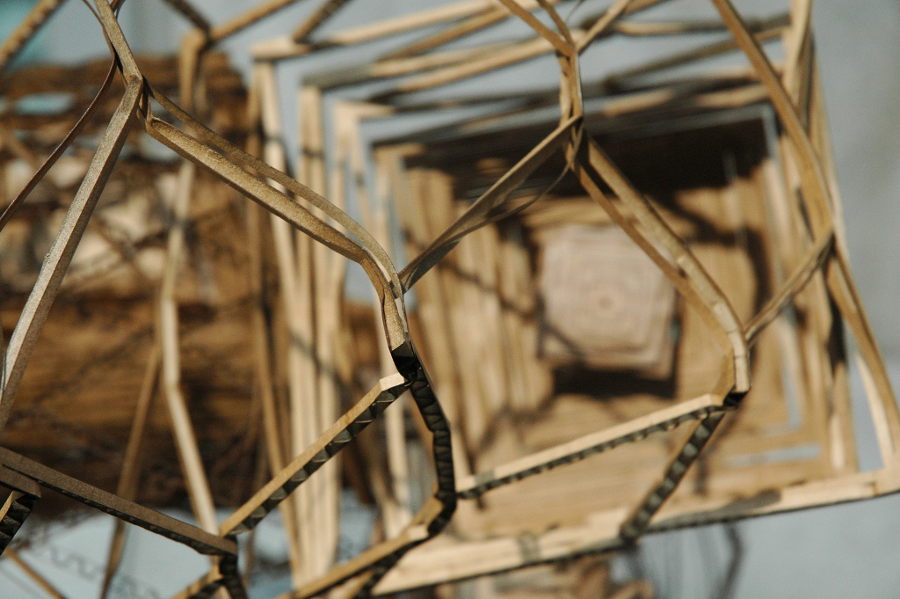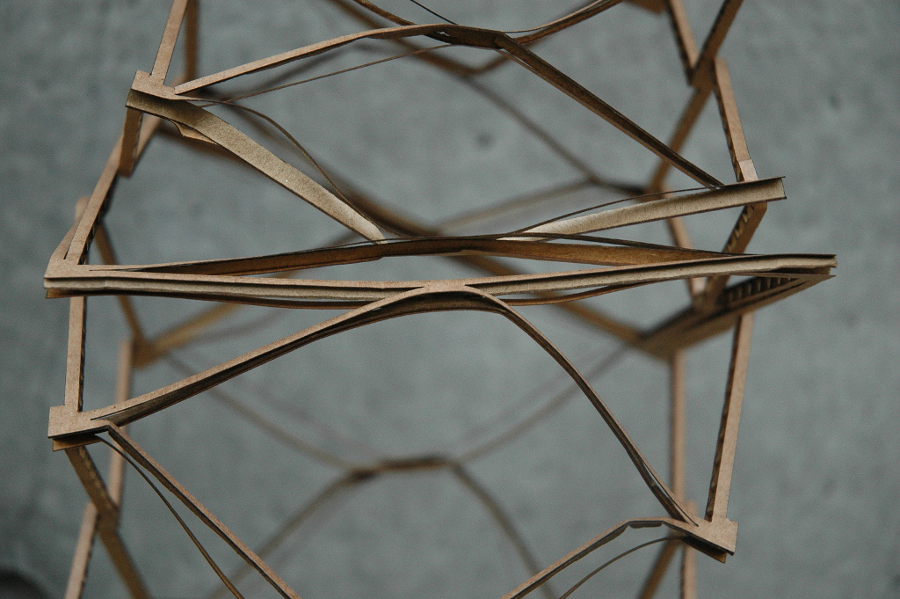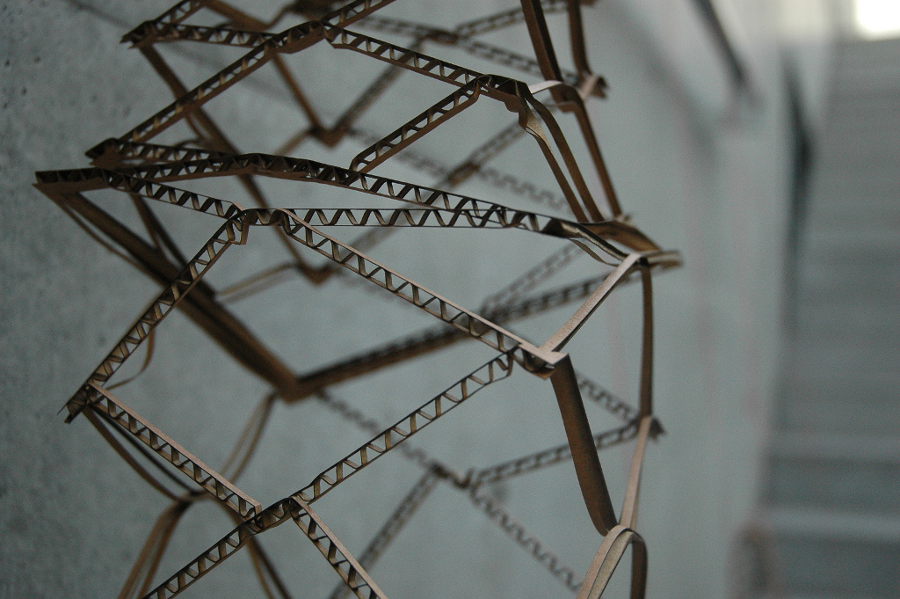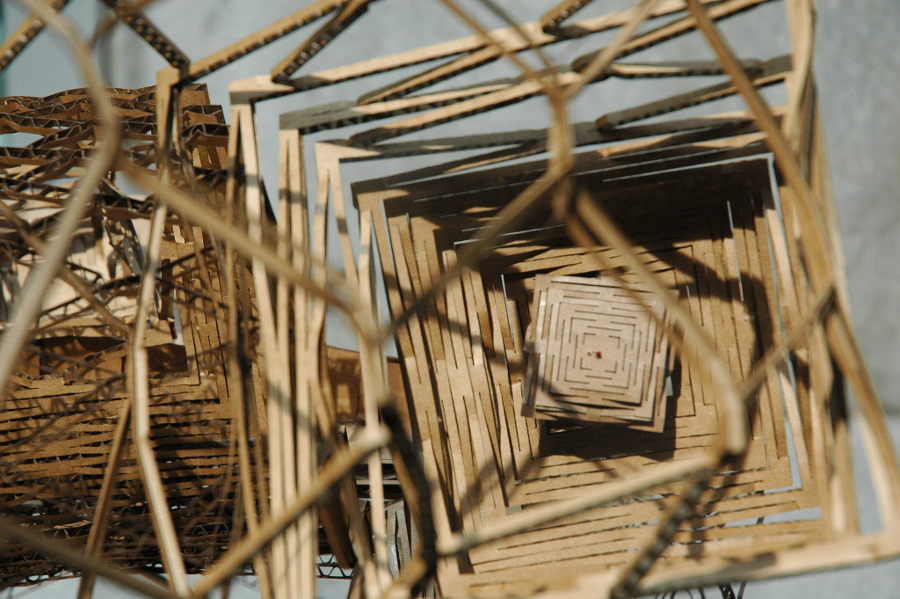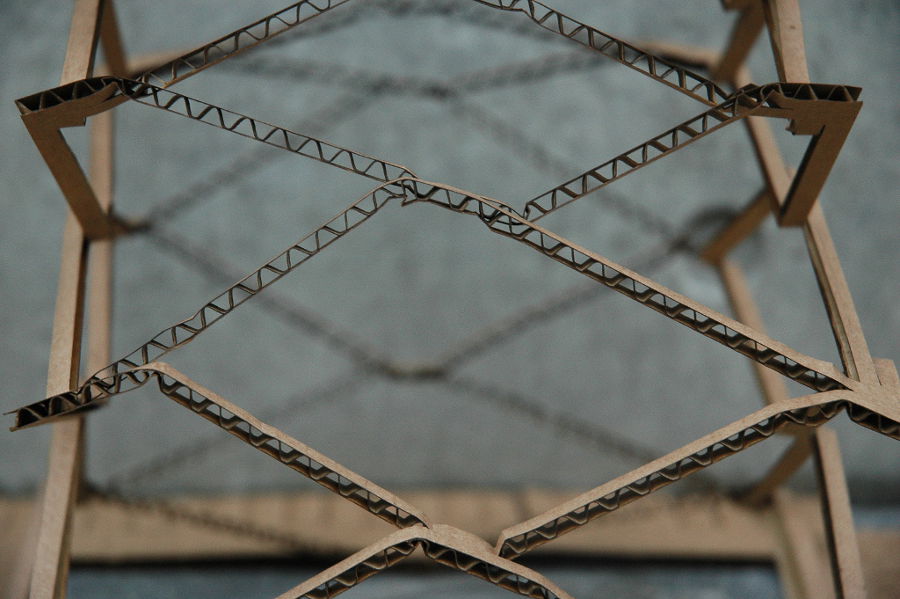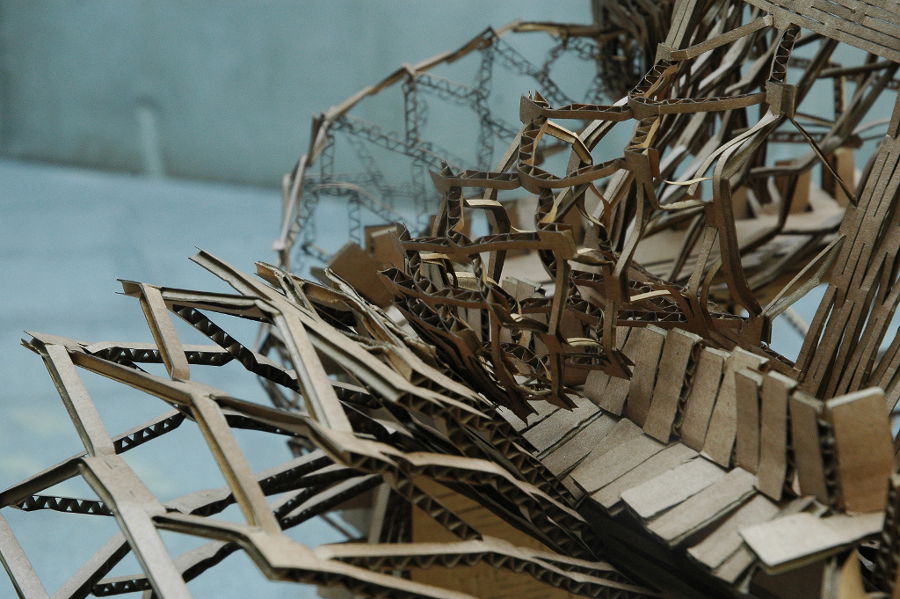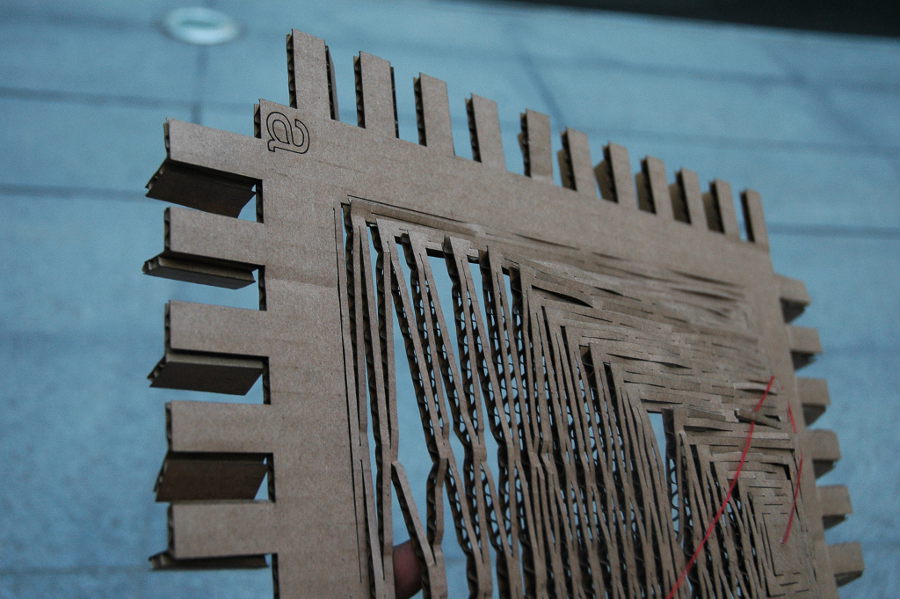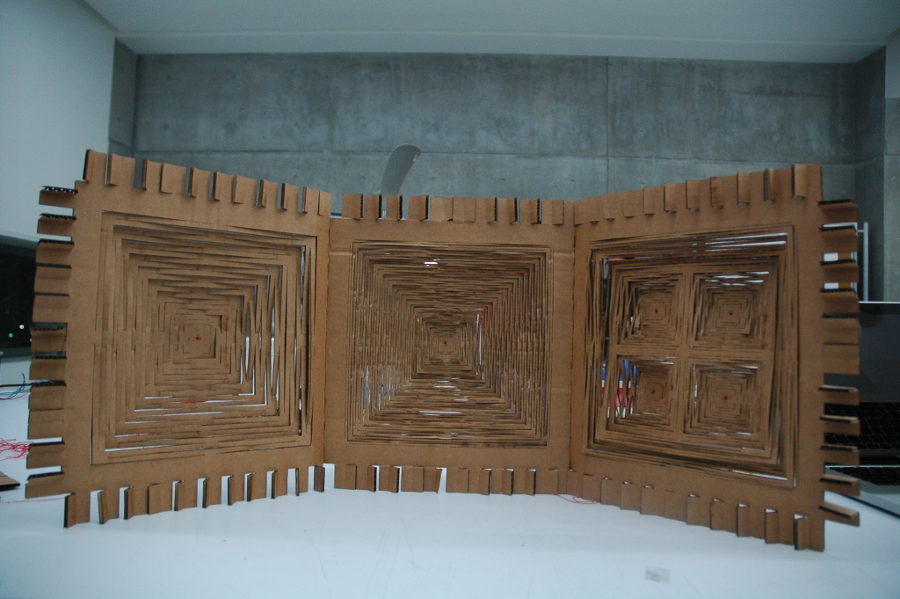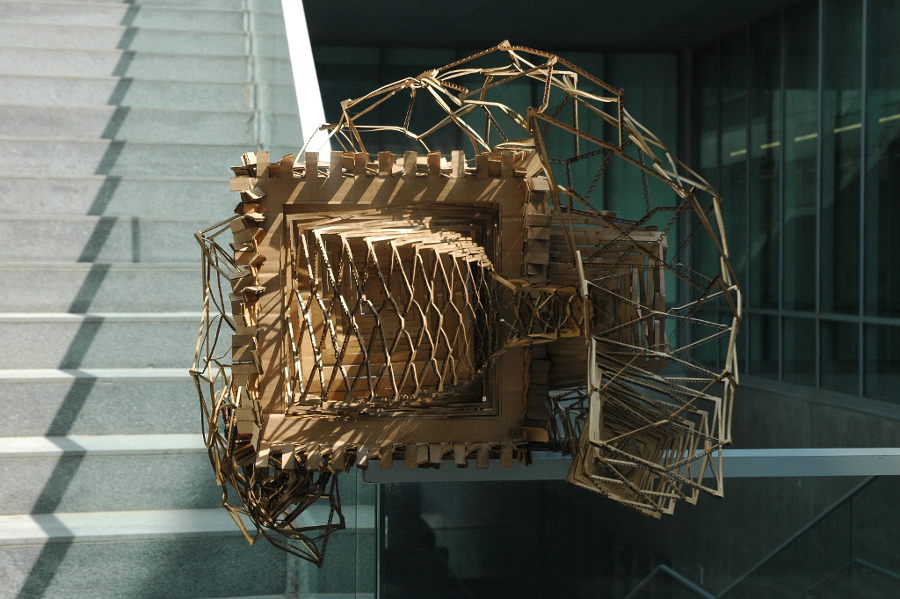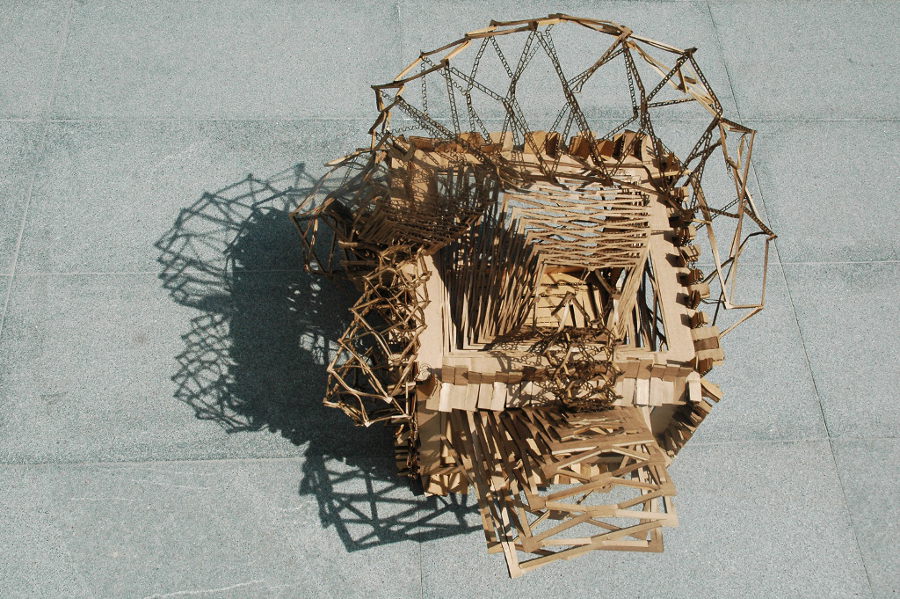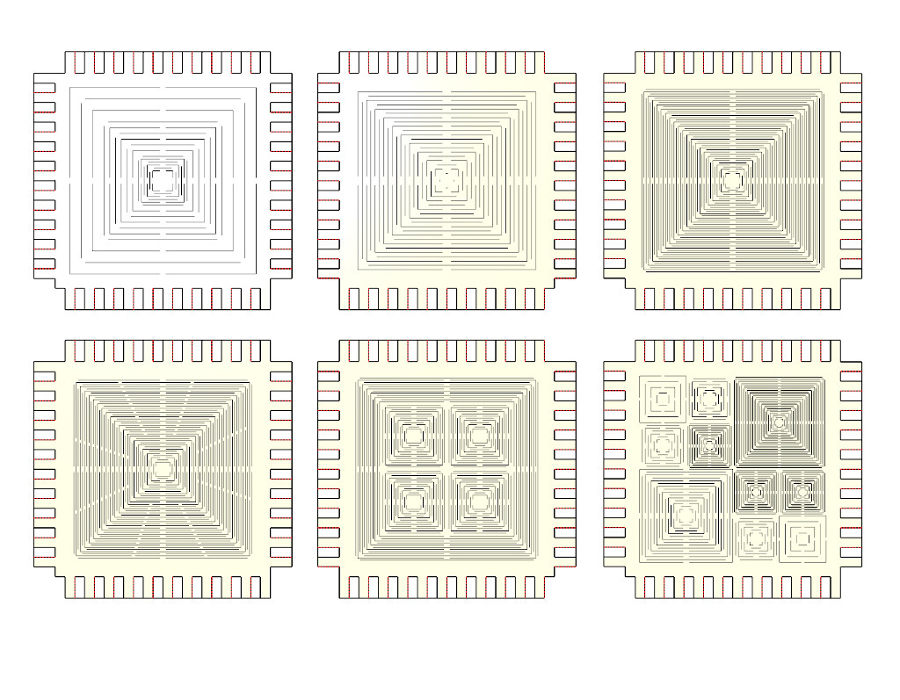For this activity I experimented with the possibilities to extend a semi-rigid material, through cuts, based on one of the most simple but powerful examples of the of the amazing art of kirigami: playing with alternated cuts, distances and thickness between them.
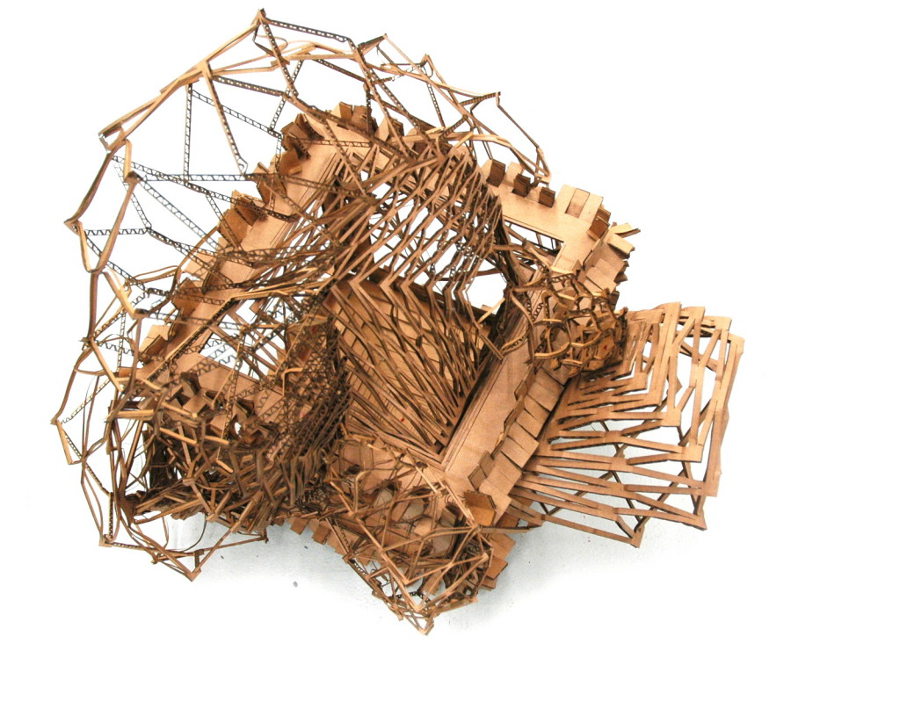

By hand
At first, I did some test with paper and cutting by hand, just to see how to generate elements open and closed, and then I decided to explore a simple pattern that can generate closed forms.
Laser cut
The material that I used for the first test cutted by hand, was a very thin paper, whose thickness was not relevant, but for my experiment with laser cut, I used cardboard corrugate and thin 4mm, that I never had experimented before with this kind of cuts; for this, I decided to generate a pattern by changing the distance between the cuts into a simple square and putting others squares into the main shape.
From my test by hand, I realized that the pattern, to be extended, needs a strong base; for this the union of the faces of the cube had to be very closed; I thought to use a joint like a sewing that can be folded and unfolded, in order to be more closed; the joint is 3 cm x 1 cm, to be pulled strongly but also folded and unfolded easily. The minimal distance between the cuts is 2mm, for the thickness of the material and in order to not burn the cardboard.
Extension
The extension of the patterns cutted with a separation of 2mm and 4 mm, was much bigger than I could imagine; instead the elements whose cuts were separated 8mm, were much more rigid than I had thought.
Elasticity
The thickness of the material with the distance between the cuts, defines visible different flexibilities of the elements
Direction
The linear direction of the material with the two perpendiculars directions of my cuts, generates an interesting pattern in both sides
Size
The number of the cuts generates elements with different sizes that are strictly related with elasticity and extension
Joints and unions
The joints were really strong and effective to sew the parts as I expected, but I think that for this material is better to study another strategy: joining the parts I have broken some of them!
The “no cube”
The final result is “nothing”… or something like a “no cube” … but for this activity rather to think to make a thing, I tried to play with the possibilities of a material; I think that the system is very powerful; I will try to do something with this system of cuts, but maybe using another material more resistant and thinner and with complex shapes.
draw of the pattern
I started to develop a small system to generate more patterns which can be applied to any shape, changing the distance, the numbers and the form of the cuts
Files

